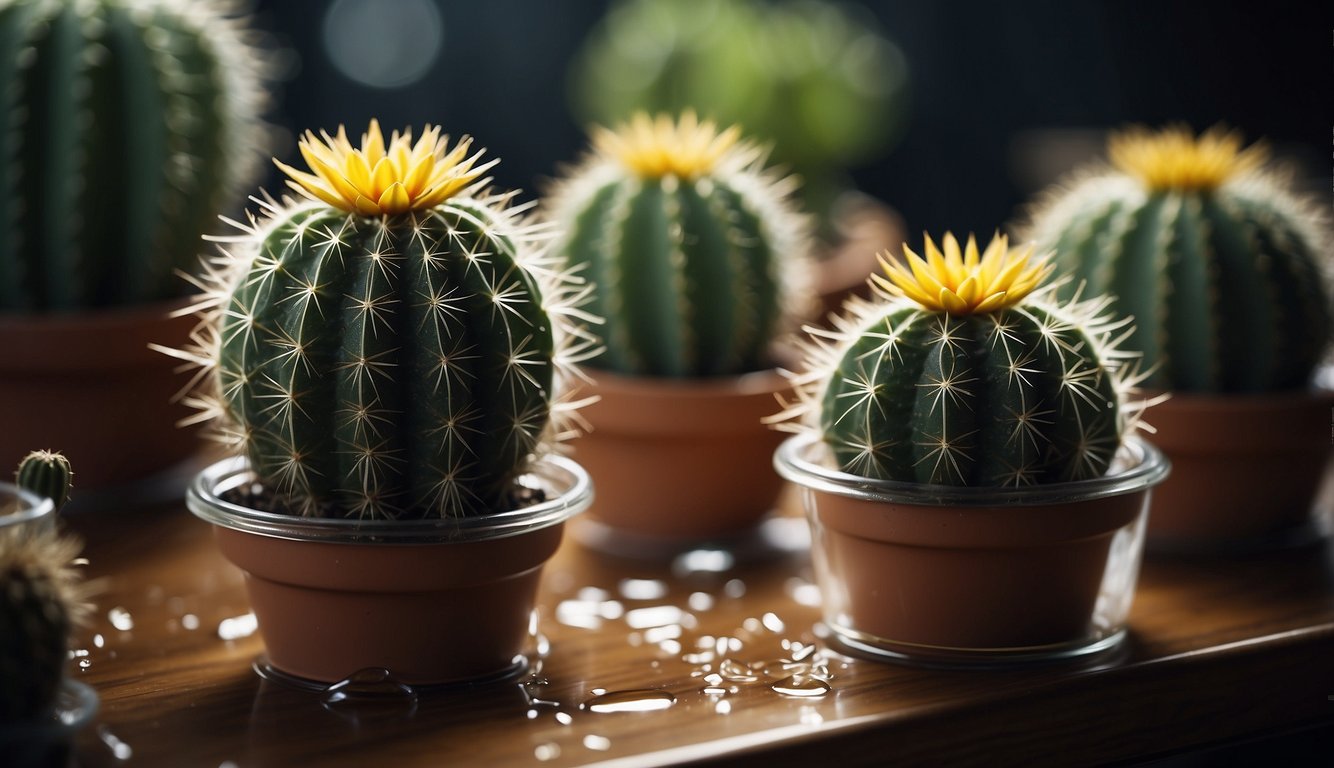TheHerbProf.com is a treasure trove of knowledge for those interested in natural healing and herbal remedies. The website is run by Paul Johnston MD. A naturopathic who has not only received extensive education in the field but also has personal experience in self-healing.
Cactus scales treatment are a common problem for cactus plants, causing deformities and poor health. As a cactus owner, it’s important to know how to detect and treat scale infestations to keep your plants healthy and thriving.
There are several effective ways to treat scale on cactus plants, including spraying the affected area with a solution of water and ethanol-based liquid or insecticidal soap and a few drops of dish-washing soap. Another option is to use neem oil, rubbing alcohol, or a combination of insecticide, dormant oil spray, and/or insecticidal soap. It’s important to apply these treatments according to the manufacturer’s directions and avoid spraying on hot, sunny days to prevent the plant from burning.
Prevention is also key in avoiding scale infestations. Adjusting watering, using well-draining soil, ensuring good ventilation, regular repotting, and introducing beneficial insects can all help keep your cactus plants healthy and free from scale. With proper care and treatment, you can keep your cactus plants looking their best.
Understanding Cactus Scale
As a cactus owner, it is important to be aware of the potential threat of scale infestations. Scale insects are oval or round-shaped pests that attach themselves to the cactus and feed on its sap. They can cause discoloration, yellowing patches, and even death of the plant if left untreated. In this section, I will provide an overview of scale insects, their identification, types, and life cycle.
Identification of Scale
Scale insects are usually small and can be difficult to spot. They can range in color from brown to black and can appear as whitish bumps on the cactus. When the scale insects attach themselves to the cactus, they secrete a waxy coating that protects them from predators and the environment. This coating can make it difficult to identify the pests.
Types of Scale: Armored and Soft
There are two main types of scale insects: armored and soft. Armored scales are the most common type found on cacti. They have a hard, protective covering that makes them difficult to control. Soft scales, on the other hand, have a soft, waxy covering that is easier to penetrate.
Life Cycle of Scale Insects
Scale insects reproduce by laying eggs on the cactus. The eggs hatch into nymphs, which are the immature form of the insect. The nymphs then feed on the sap of the cactus and go through several molts before becoming adults. Once the insects reach adulthood, they mate and lay eggs, starting the life cycle all over again.
Scale insects also produce a sticky substance called honeydew, which can attract ants and encourage the growth of sooty mold. This can further harm the cactus and make it more difficult to control the infestation.
In the next section, I will discuss the treatment options for cactus scale infestations.
Inspecting Cacti for Scale

As a cactus owner, it’s essential to inspect your plants regularly for scale infestations. Scale insects are small, oval-shaped pests that attach themselves to the leaves and stems of cacti, feeding on their sap and causing damage. Here are some tips on how to inspect your cactus for scale:
How to Inspect Your Cactus
When inspecting your cactus for scale, it’s essential to examine both the topside and underside of the leaves and stems. Scale insects are often found in clusters and can be difficult to spot, so it’s important to look closely. You can use a magnifying glass to get a better view.
Recognizing Early Signs of Infestation
Early detection of scale infestations is crucial to prevent further damage to your cactus. Some early signs of infestation include yellowing of the leaves, gray/brown/black spots on the leaves, and dark coloration on the stems. If you notice any of these signs, it’s important to inspect your cactus more closely for scale insects.
Another sign of scale infestation is drooping or premature drop off of leaves. If you notice any of these signs, it’s essential to take action immediately to prevent the infestation from spreading to other plants.
Regular inspection and maintenance are crucial in preventing scale infestations. By following these simple steps, you can keep your cacti healthy and free from pests.
Common Treatment Methods – Cactus Scale Treatment

As a cactus owner, it is important to be aware of the common treatment methods for scale infestation. In this section, I will discuss the most effective treatment methods for cactus scale.
Using Insecticidal Soap
Insecticidal soap is an effective treatment method for cactus scale. It is a natural and non-toxic solution that can be used to get rid of the pests. To use insecticidal soap, mix the solution with water and put it in a spray bottle. Spray the affected areas of the cactus with the solution, making sure to cover all the crusty parts. After 10-15 minutes, gently rub the dead scale off with a cotton swab.
Alcohol Treatments
Alcohol treatments, such as rubbing alcohol or isopropyl alcohol, are highly effective against scale, mealybugs, fungus gnats, spider mites, and other crawlers. To treat the scale, dip a cotton ball or swab into full-strength rubbing alcohol and manually dab the visible pests. Alternatively, mix water and rubbing alcohol in a ratio of 1:1 and add a few drops of dish soap. Pour the solution in a garden sprayer and spray the affected cacti, covering all the crusty parts. Gently rub the dead scale off after 10-15 minutes to remove them from the cactus.
Horticultural Oil Applications – Cactus Scale Treatment
Horticultural oil is another effective treatment method for cactus scale. It works by suffocating the pests and preventing them from breathing. To use horticultural oil, mix the solution with water and put it in a spray bottle. Spray the affected areas of the cactus with the solution, making sure to cover all the crusty parts. After 10-15 minutes, gently rub the dead scale off with a cotton swab.
In conclusion, using insecticidal soap, alcohol treatments, and horticultural oil applications are the most effective treatment methods for cactus scale. By using these methods, you can get rid of the pests and keep your cactus healthy.
Cultural and Physical Interventions

As a plant with a unique set of needs, treating cactus scale requires a combination of cultural and physical interventions. Here are some effective ways to manage cactus scale infestations.
Pruning and Quarantine
Pruning is a useful way to remove cactus scale from infected plants. It involves cutting off the infected parts of the plant, including the leaves and stems. The removed parts should be disposed of properly to prevent further spread of the infestation. Quarantine is also an important cultural intervention that involves isolating the infected plant from other plants to prevent the spread of the infestation.
Environmental Adjustments – Cactus Scale Treatment
Environmental adjustments can also be made to prevent and treat cactus scale. One of the most important adjustments is ensuring that the plant receives adequate sunlight. Cacti require a lot of sunlight to thrive, so it is important to place them in a well-lit area. Additionally, ensuring that the plant is well-ventilated can help prevent the spread of the infestation. New plants should also be inspected for signs of infestation before being introduced to the garden.
Overall, treating cactus scale requires careful attention and care. Pruning, quarantine, and environmental adjustments are all important interventions that can help prevent and treat cactus scale infestations. By following these cultural and physical interventions, cactus owners can ensure that their plants remain healthy and free from infestation.
Biological Control Strategies
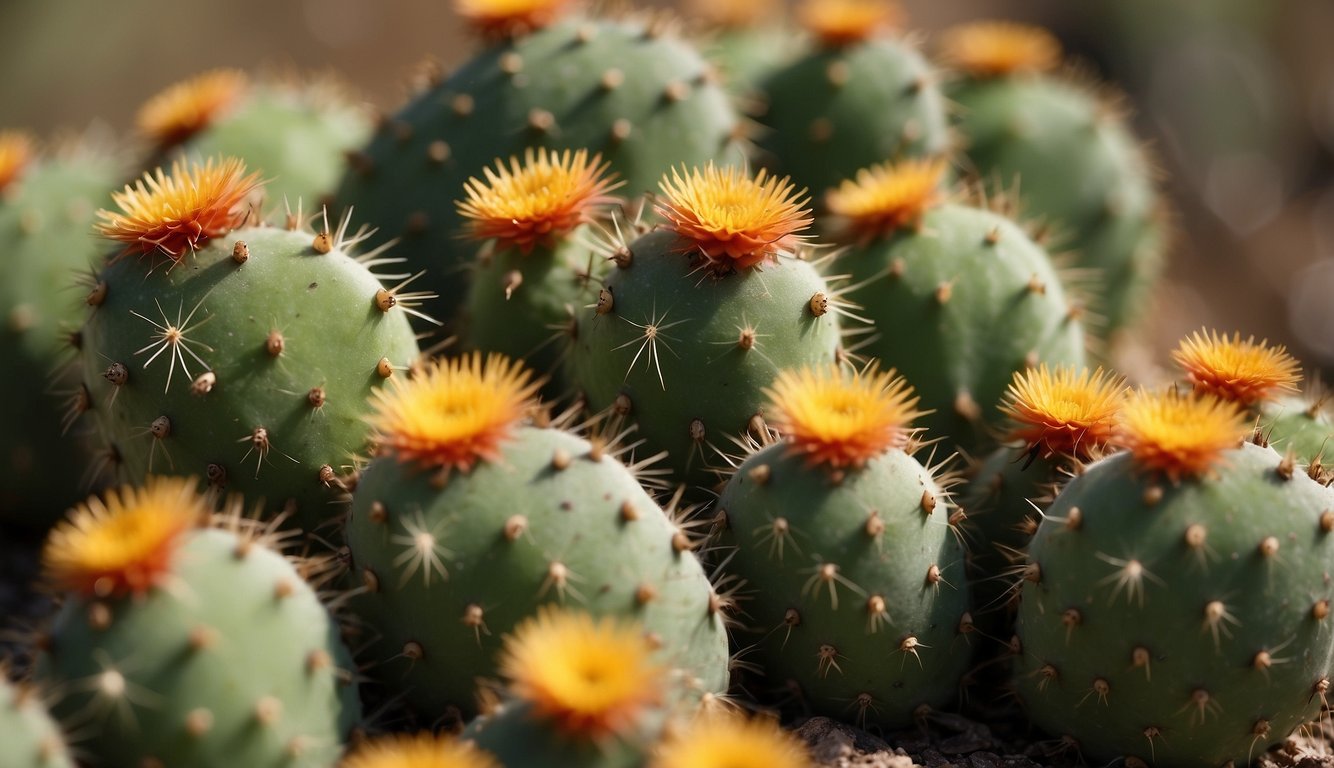
As an alternative to chemical control methods, biological control strategies can be used to manage cactus scale infestations. This approach involves the use of natural enemies to reduce the population of scales and prevent further damage to the cactus.
Introducing Beneficial Insects – Cactus Scale Treatment
Beneficial insects such as ladybugs, lacewings, and beetles can be introduced to the affected area to control cactus scale populations. Ladybugs, also known as lady beetles, are effective predators of scale insects and can consume up to 50 per day. Lacewings are also effective predators of scale insects and can consume up to 200 per week. Beetles such as the mealybug destroyer beetle feed on both mealybugs and scale insects. These beetles can be purchased from biological control companies and released onto the affected cactus.
Natural Predators of Scale
Birds, bees, and wasps are also natural predators of scale insects. Birds such as the purple martin and chickadee feed on scale insects, while certain species of wasps and bees parasitize scale insects. The parasitic wasp, for example, lays its eggs inside the scale insect, which eventually kills the host. This method of biological control is known as parasitism and can be an effective way to control scale populations.
Overall, biological control strategies can be an effective and environmentally friendly way to manage cactus scale infestations. By introducing beneficial insects and natural predators of scale, the population of scales can be reduced and the health of the cactus can be restored.
Chemical Pesticides and Their Use – Cactus Scale Treatment
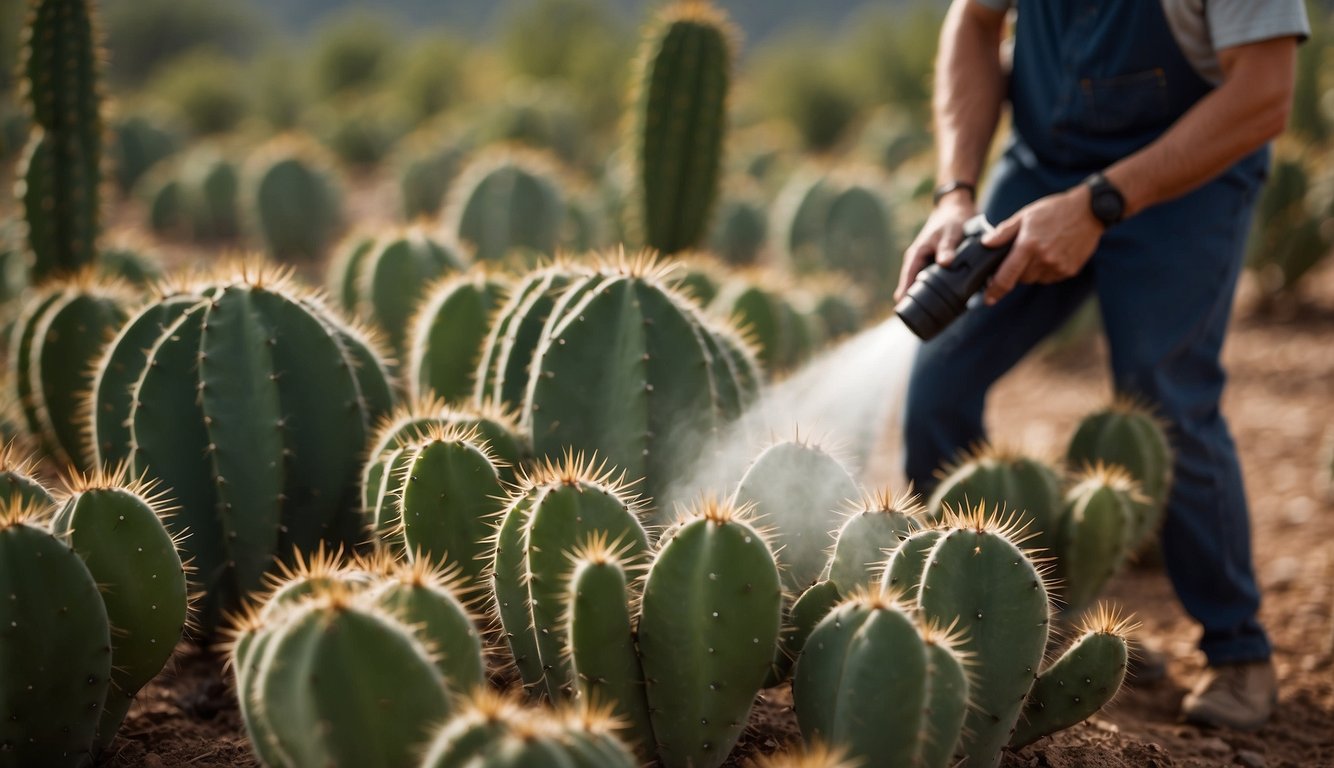
As a last resort, chemical pesticides can be used to control cactus scale infestations. However, it is important to select the right pesticide and to follow the label instructions carefully.
Selecting the Right Pesticide – Cactus Scale Treatment
One common pesticide used for controlling cactus scale is imidacloprid. Imidacloprid is a systemic insecticide that is absorbed by the roots of the plant and transported to the leaves and stems. It is effective against a wide range of pests, including cactus scale. However, it is important to note that imidacloprid can take several weeks to take effect, so it may not be the best option for severe infestations.
Before using any pesticide, it is important to read the label carefully to ensure that it is safe for use on cacti and that it is effective against the target pest. Some pesticides may only be effective against certain life stages of the scale, so it is important to choose a pesticide that is labeled for the life stage of the scale that is present.
Application and Safety Precautions
When applying pesticides, it is important to follow all label instructions carefully. This includes wearing protective clothing, such as gloves and a mask, and avoiding contact with the skin and eyes. It is also important to avoid applying pesticides on windy days to prevent drift.
It is important to note that pesticides can be harmful to beneficial insects, such as bees and ladybugs, so it is important to use them sparingly and only as a last resort. Additionally, some pesticides may harm the protective shell of the cactus, so it is important to test the pesticide on a small area of the plant before applying it to the entire plant.
In conclusion, chemical pesticides can be an effective tool for controlling cactus scale infestations, but they should only be used as a last resort. When using pesticides, it is important to select the right pesticide, follow all label instructions carefully, and take appropriate safety precautions.
Preventing Future Scale Problems
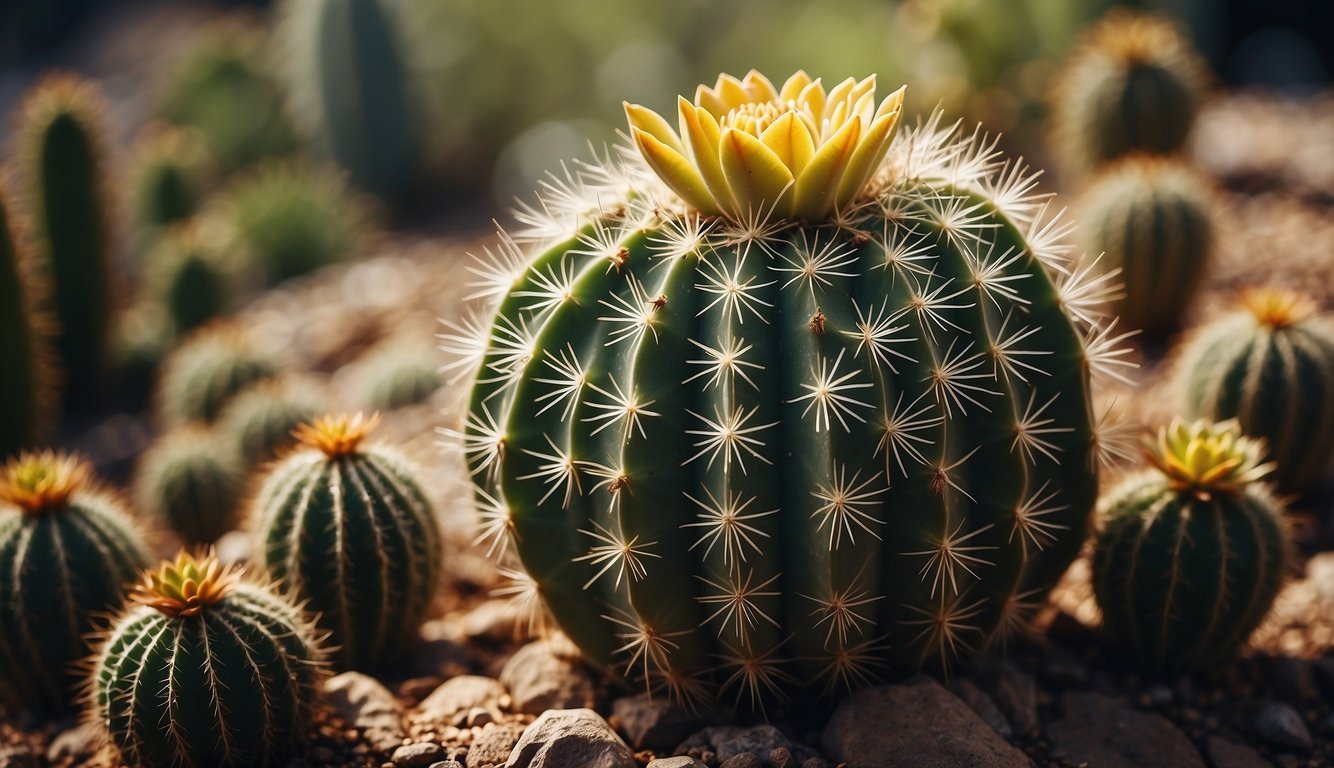
As a cactus owner, it is important to take preventative measures to avoid future scale infestations. Here are some tips to help you keep your cactus healthy and free of scale:
Regular Monitoring and Maintenance
Regular monitoring and maintenance of your cactus is the first line of defense against scale. Inspect your cactus regularly for signs of insect activity, such as sticky residue, black sooty mold, or visible insects. If you notice any of these signs, take action immediately to prevent an outbreak.
Prevention Techniques – Cactus Scale Treatment
Prevention is key to keeping your cactus healthy and free of scale. Here are some techniques to help prevent future scale problems:
- Adjust watering: Overwatering can weaken your cactus and make it more susceptible to scale infestations. Make sure to water your cactus only when the soil is dry to the touch.
- Use well-draining soil: Using well-draining soil can help prevent water from accumulating around the roots of your cactus, which can lead to root rot and weaken the plant.
- Ensure good ventilation: Good ventilation can help prevent the buildup of humidity around your cactus, which can attract scale insects.
- Regular repotting: Repotting your cactus every two to three years can help prevent the buildup of pests and diseases in the soil.
- Introduce beneficial insects: Introducing beneficial insects, such as ladybugs or lacewings, can help control scale infestations by eating the insects.
By following these prevention techniques and regularly monitoring and maintaining your cactus, you can help prevent future scale problems and keep your cactus healthy and thriving.
Additional Concerns and Care – Cactus Scale Treatment
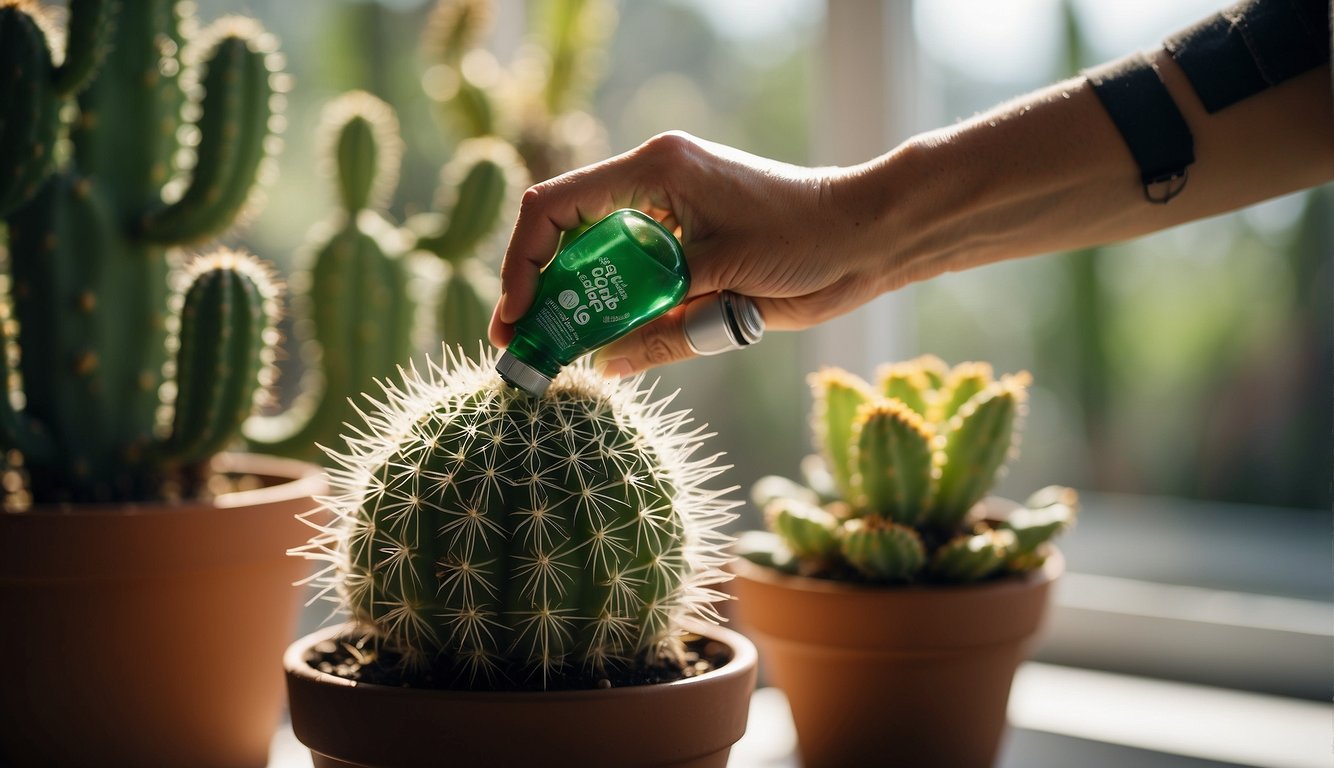
Dealing with Secondary Problems
While treating scale on cacti, it is important to keep an eye out for secondary problems that may arise. For instance, mites and fungus can be a common problem alongside scale infestations. If you notice any signs of these secondary problems, it is important to address them immediately.
One way to prevent secondary problems is to ensure that the environment in which the cactus is growing is clean and well-maintained. Regularly cleaning the area around the cactus and ensuring that it is not overwatered can go a long way in preventing these issues.
Nutrient Deficiency and Plant Health – Cactus Scale Treatment
Nutrient deficiency can also be a concern when treating scale on cacti. A lack of nutrients can weaken the plant, making it more susceptible to disease and death. It is important to ensure that the cactus is getting the nutrients it needs to stay healthy and strong.
Succulents and cacti require specific nutrients to thrive. They need a well-draining soil mix with a balanced blend of nutrients. You can use a slow-release fertilizer or a liquid fertilizer to provide the necessary nutrients.
In addition to providing the necessary nutrients, it is important to ensure that the cactus is getting enough light. Most cacti require bright, indirect sunlight to thrive. If the cactus is not getting enough light, it may become weak and more susceptible to disease.
Overall, treating scale on cacti requires a combination of patience, care, and attention to detail. By taking the time to address any secondary problems and ensure that the cactus is getting the nutrients it needs, you can help ensure that it stays healthy and strong.
The Prickly Pair: Cactus Scale Treatment and The Herb Prof
Let’s delve into the prickly topic of cactus scale treatment and its connection to our herbal oasis, theherbprof.com. Ready for a wild ride?
Firstly, treating cactus scale is a test of diligence and care. It’s about protecting our spiky friends from pesky pests. Sounds familiar? That’s because theherbprof.com helps you protect your herbal knowledge from misinformation!
Secondly, both cactus scale treatment and theherbprof.com are about preservation. Just like a healthy cactus preserves the beauty of our gardens, theherbprof.com preserves the wisdom of herbs. You can check our homepage here!
Lastly, they both aim to enrich our lives. A healthy cactus adds charm to our homes, while theherbprof.com adds charm to our minds with herbal wisdom.
So, there you have it! Cactus scale treatment and theherbprof.com are a prickly pair indeed. They both symbolize diligence, preservation, and enrichment. Now, isn’t that a sharp piece of information to share at your next garden party? Keep growing, folks!
References – Cactus Scale Treatment
Little Herb Encyclopedia, by Jack Ritchason; N.D., Woodland Publishing Incorporated, 1995
The Ultimate Healing System, Course Manual, Copyright 1985, Don Lepore
Planetary Herbology, Michael Tierra, C.A., N.D., Lotus Press, 1988
Handbook of Medicinal Herbs, by James A. Duke, Pub. CRP Second Edition 2007
The Complete Medicinal Herbal, by Penelope Ody, Published by Dorling Kindersley
Check the Following Articles!
How Long Does it Take Seeds to Sprout in Soil?
Leggy Seedlings Tomato: How to Prevent and Fix Stretching
Pepper Seeds Not Sprouting? All You Need To Know!
Frequently Asked Questions – Cactus Scale Treatment

How can I identify scale infestation on my cactus?
Scale infestation on cacti is characterized by the appearance of small, flat, oval or round, brown or yellowish-brown bumps on the plant’s surface. These bumps can be found on the stems, leaves, and even flowers of the cactus. The bumps are actually the protective coverings of the scale insects, which feed on the plant’s sap. If left untreated, the scales can cause stunted growth, yellowing of the plant, and even death.
What natural remedies are effective for treating scale on cacti?
There are several natural remedies that can be used to treat scale on cacti. One effective method is to mix water and rubbing alcohol in a ratio of 1:1 and add a few drops of dish soap. Pour the solution in a garden sprayer and spray the affected cacti, covering all the crusty parts to get rid of the scale on cactus. Gently rub the dead scale off after 10-15 minutes to remove them from the cactus. Another natural remedy is to use neem oil, which is a natural insecticide that is effective against a wide range of pests, including cactus scale. Dilute neem oil with water according to the manufacturer’s instructions and spray it on the affected areas of your cactus. Repeat this treatment every one to two weeks until the scale is eradicated.
What are the steps for using neem oil to treat cactus scale?
To use neem oil to treat cactus scale, dilute the oil with water according to the manufacturer’s instructions. Then, spray the solution on the affected areas of your cactus. Repeat this treatment every one to two weeks until the scale is eradicated.
Can hydrogen peroxide be used to combat scale on cactus plants?
Hydrogen peroxide can be used to combat scale on cactus plants. Mix one part hydrogen peroxide with three parts water and spray the solution on the affected areas of your cactus. However, it is important to note that hydrogen peroxide can also harm beneficial microorganisms in the soil, so it should be used sparingly.
How does one apply a DIY treatment for scale on cacti?
To apply a DIY treatment for scale on cacti, mix water and rubbing alcohol in a ratio of 1:1 and add a few drops of dish soap. Pour the solution in a garden sprayer and spray the affected cacti, covering all the crusty parts to get rid of the scale on cactus. Gently rub the dead scale off after 10-15 minutes to remove them from the cactus.
What is the most effective systemic insecticide for cactus scale?
The most effective systemic insecticide for cactus scale is imidacloprid. This insecticide is absorbed by the plant and kills the scale when they feed on the plant’s sap. However, it is important to follow the manufacturer’s instructions carefully when using any insecticide on your cactus.
